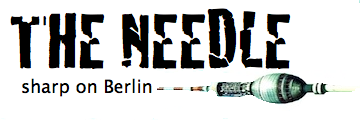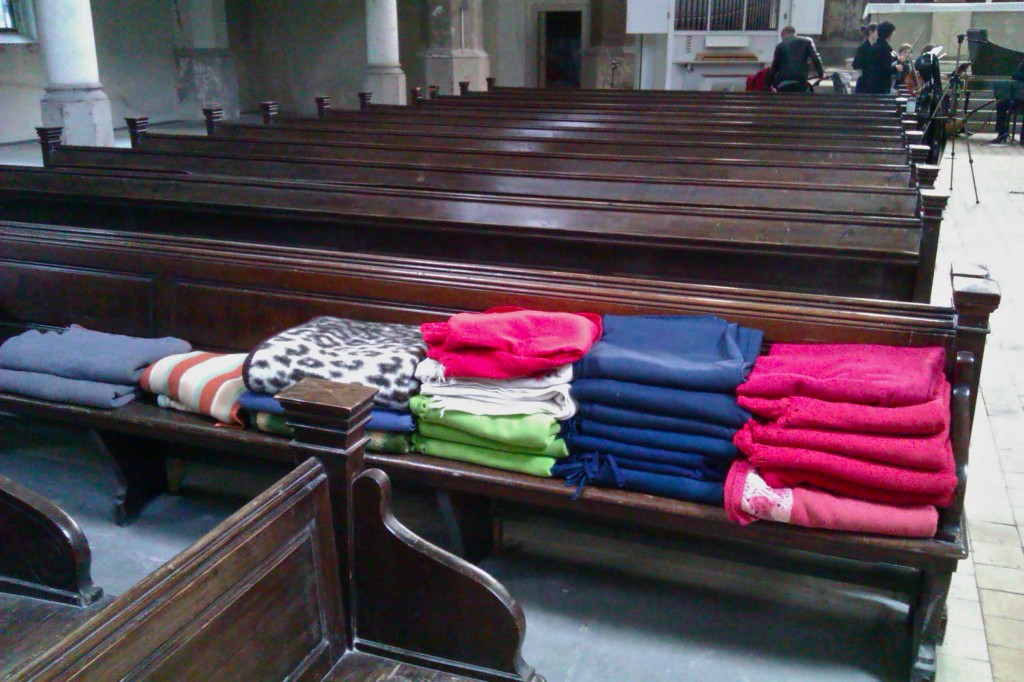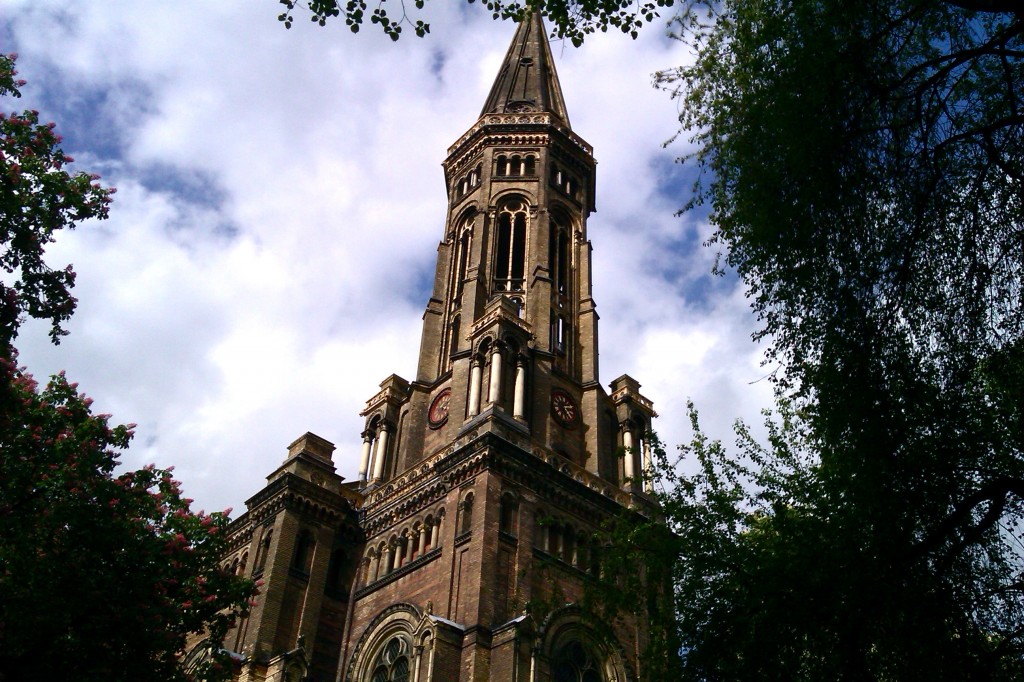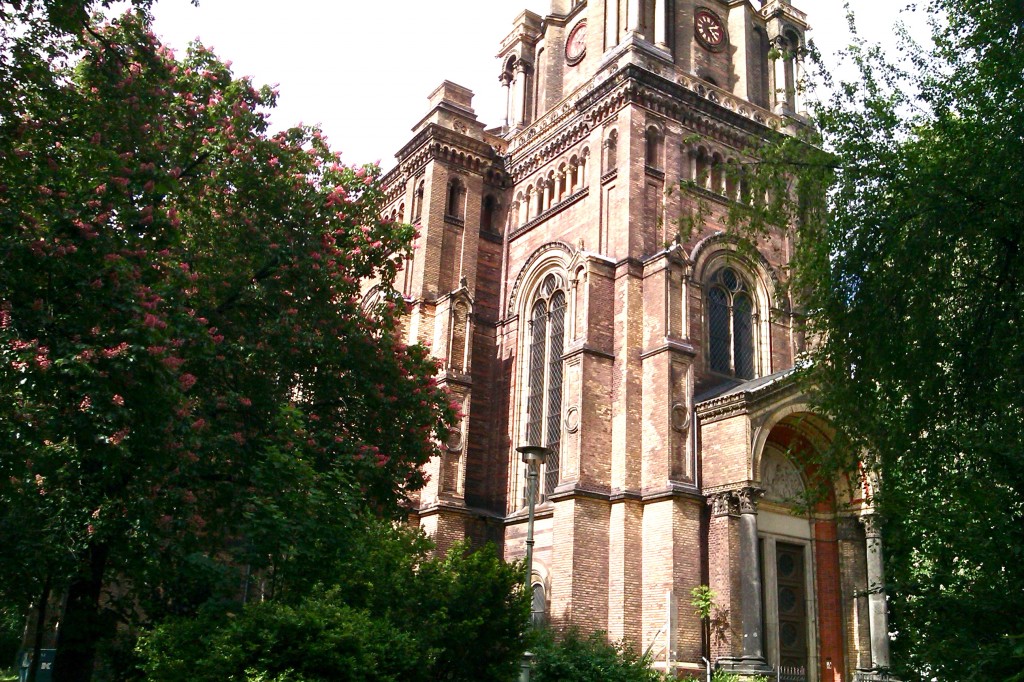Nazi Resistors: Dietrich Bonhoeffer and the Zionskirche
At the age of 25, in 1931, Dietrich Bonhoeffer became the vicar of the Protestant Zionskirche in Berlin Mitte.
What would happen to this young man over the following fourteen years is remarkable and appalling. The story is recounted with precision in a recent article by Elisabeth Sifton and Fritz Stern in the New York Review of Books and deserves repeating here.
Dietrich was an outspoken critic of Nazism in his parish, part of the anti-Nazi Protestant ‘Confessional Church’. Driven by faith and his sense of justice, he was involved in a number of anti-Nazi conspiracies with Hans von Dohnanyi, his brother in law. Dohnanyi was working in the Reich Justice Ministry and complicit in plots against Hitler and plans to save Jews (such as Operation 7, an elaborate and successful plan which rescued German Jews and got them to Switzerland). Hans even carried a bomb disguised as two bottles of Cointreau to plant on Hitler’s plane in 1943 (it was regrettably unsuccessful).
The two men, first arrested in April 1943, were later implicated in the frenzy of arrests and sentences following the July 20 1944 plot. Interrogated, kept in solitary confinement, moved from prison to concentration camp to prison, they nonetheless did not divulge the names of their accomplices.
Hans was intentionally infected with diphtheria to keep him in hospital and out of the hands of the Gestapo. But the plan eventually went wrong and he ended up in the sick ward of Sachsenhausen with scarlet fever. Amazingly, despite paralysis below the waist, he hung on, seeing the end of the war in sight. Meanwhile Bonhoeffer, first imprisoned in the Gestapo headquarters (where the Topographie of Terror museum is now located), was then brought to the camp at Flossenbürg near Buchenwald. Just weeks before the war’s end, and on Hitler’s express orders, Hans was hanged on April 5 1945, and Dietrich on April 9.
Come to Zionskirche today, at the top of the Weinberg hill, and it’s impossible not to think about the past. Its scarred and spartan interior shows that much of the original 1873 church was reconstructed after partial destruction by air-raid bombings in November 1943. It has a remarkable GDR history too (as a location of clashes with skinheads and concert-goers in the 80s, or as a location for organised Protestant resistance to the Communist regime).
There’s a portrait of Bonhoeffer in one corner. I sit down. A group of musicians is practicing for a concert that evening. There are blankets piled on the pews to keep you warm.
The article in the New York Review has stirred a number of questions. One is about faith. I am a secular person but admire their courage, but wonder whether their faith was a necessary component of their will to resist. This leads me to think about why so few Germans resisted. We focus on figures like Dohnanyi and Bonhoeffer precisely because they were the few. And I wonder whether their story, because it is exceptional, really is inspirational, or, in fact, just emblematic of the tragedy. The article quotes Dohnanyi who says they were simply ‘on the path that a decent person inevitably takes’, and the article comments: ‘So few traveled that path—anywhere’. I am not sure how I feel about the tag ‘anywhere’, because civil disobedience was much higher in Italy, for example. German opposition was exceptionally low, and it is a false redemption to take comfort in these individual stories of resistance. They should, instead, make us feel very uncomfortable.
I reach for a blanket.







Thanks for this article. I knew the Zionkirche from the anti-DDR rallys in the 1980s, and didn’t know this earlier fascinating history.
I used to be more surprised by the apparent general opposition to the Nazis, but not so much anymore. Perhaps it’s true that the Italians showed more civil disobedience, but they also don’t seem to have reflected (like the Japanese) as much about what they did after the war. People can be remarkably passive. I remember reading that there were a remarkably small number of Nazis in Occupied France (I don’t remember the figure but it was something like 1 per 1000 or 1 per 10000).